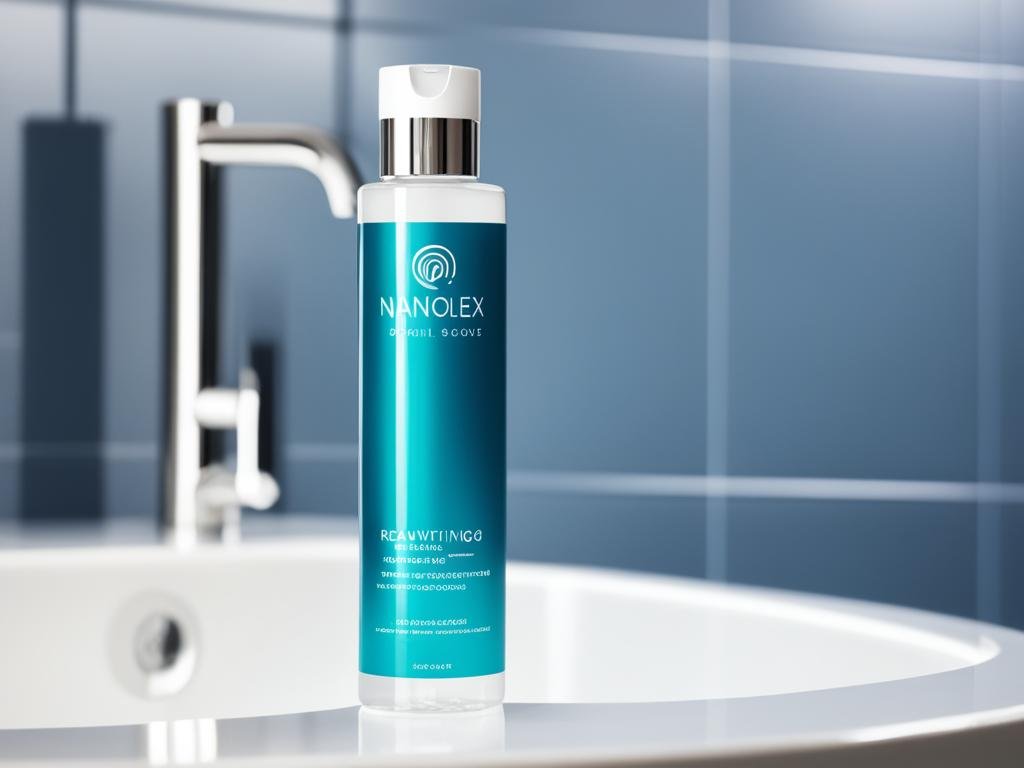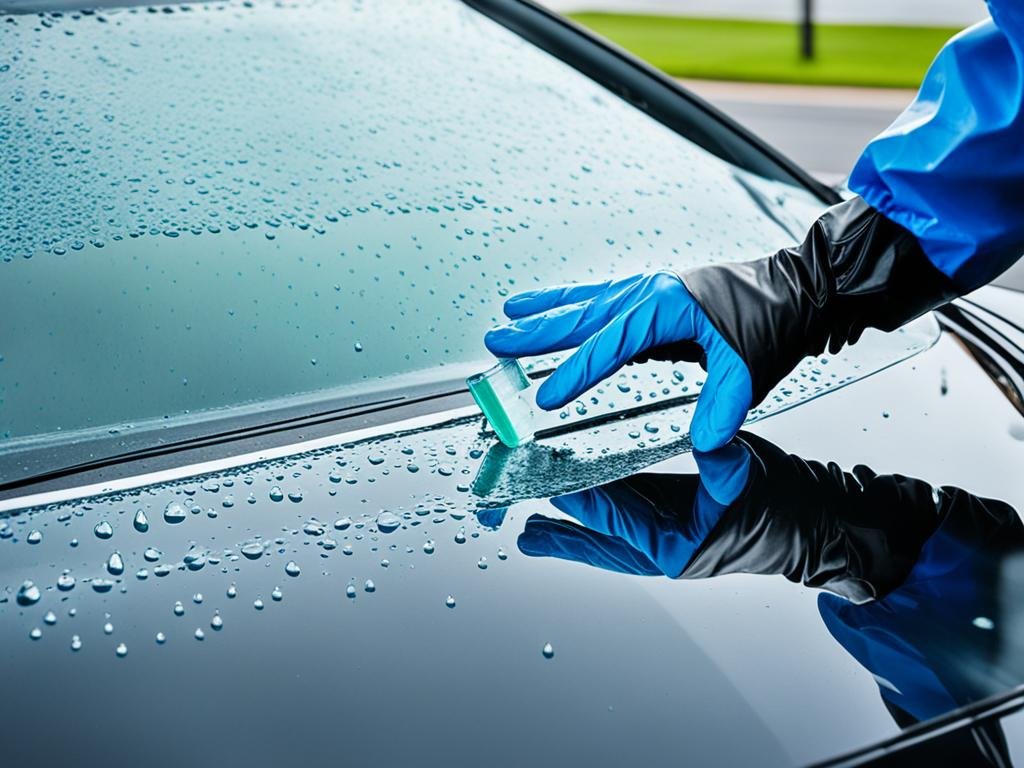How to Clean and Dress Car Seatbelts
April 11, 2024 | by Rosie Dazzlers

Serving Norfolk and Oxford counties, we bring the shine to you. Trust us to make your vehicle dazzle with our professional mobile auto detailing services. From sedans to SUVs, experience unmatched convenience and quality right at your doorstep. Whether you need a thorough interior cleaning or a complete exterior makeover, we have the expertise to deliver exceptional results.
At Rosie Dazzlers, we understand the importance of maintaining every aspect of your car, including its seatbelts. That’s why we offer comprehensive car seatbelt maintenance services to keep your seatbelts clean, safe, and in optimal condition. Our team of experts will ensure that your seatbelts are thoroughly cleaned and dressed, promoting both car safety and hygiene.
Key Takeaways:
- Regular car seatbelt maintenance is crucial for car safety and hygiene.
- Dirty seatbelts can harbor germs, bacteria, and cause odors.
- Cleaning seatbelts with gentle solutions and proper techniques is important to avoid damage.
- Preventing odors and mold in seatbelts requires thorough drying and mold preventative sprays.
- Regular inspection and care of seatbelts can prolong their lifespan and reliability.
The Importance of Cleaning Seatbelts for Car Safety
Seatbelts play a crucial role in car safety, reducing the risk of death and serious injury in the event of a crash. Regularly cleaning and maintaining seatbelts is important to ensure their functionality and effectiveness.
Dirty seatbelts can harbor germs and bacteria, cause odors, and even lead to staining and deterioration. By keeping your seatbelts clean, you can ensure their longevity and reliability.
Proper car interior maintenance, including regular seatbelt cleaning, is essential for creating a safe and comfortable driving environment. Neglecting to clean your seatbelts can compromise their performance and compromise your safety on the road.
“Regularly cleaning and maintaining seatbelts is important to ensure their functionality and effectiveness.”
When we consider that seatbelts are exposed to various elements such as oils from our skin, sweat, food particles, and even pet hair, it’s easy to understand why they need regular cleaning.
Over time, seatbelts can accumulate dirt, grime, and even stains that not only affect their appearance but also impact their ability to function properly. Additionally, dirty seatbelts can develop foul odors, making your car environment less pleasant for both drivers and passengers.
Benefits of Cleaning Seatbelts
Cleaning your seatbelts has several benefits:
- Improves car safety by ensuring proper functionality of seatbelts.
- Removes dirt, germs, and bacteria that can accumulate on seatbelts over time.
- Prevents staining and deterioration of seatbelt material.
- Eliminates odors and improves the overall freshness of your car interior.
Regular seatbelt cleaning should be part of your car maintenance routine. By doing so, you not only prioritize your safety but also contribute to the longevity and reliability of your seatbelts.
| Importance of Seatbelt Cleaning | Benefits of Seatbelt Cleaning |
|---|---|
| 1. Improves car safety | 1. Ensures proper functionality |
| 2. Reduces the risk of injury | 2. Removes dirt, germs, and bacteria |
| 3. Maintains seatbelt longevity | 3. Prevents staining and deterioration |
| 4. Enhances car interior hygiene | 4. Eliminates odors |
To emphasize the importance of seatbelt cleaning, we have prepared a visual representation of the benefits:

Regular cleaning of your car seatbelts not only protects you and your passengers but also ensures a pleasant driving experience.
Methods for Cleaning Seatbelts
When it comes to cleaning your car seatbelts, there are several effective methods you can use to ensure they are spotless and safe. We recommend trying these DIY seatbelt cleaning techniques to achieve the best results!
Pull and Secure Method
One method for cleaning seatbelts is to pull them out and secure them with a clamp to prevent retraction. This allows you to have full access to the belt for a thorough cleaning. Once secured, you can apply an all-purpose cleaner or fabric cleaner onto a microfiber cloth and gently scrub the belt.
Gentle Detergent Solution
Another effective method involves creating a gentle detergent solution to clean your seatbelts. Mix a small amount of gentle detergent, such as Dawn dish soap or baby wash, with warm water. Dip a soft-bristle brush into the solution and carefully scrub the seatbelt, focusing on any stains or dirt buildup. Remember to use a gentle touch to avoid damaging the material.
Microfiber Towel Drying
After cleaning the seatbelts, it’s crucial to remove any excess moisture and allow them to dry completely. Use dry microfiber towels to gently blot and wipe away the moisture. This will help prevent mold and mildew from forming while ensuring the seatbelts are ready for use.
Remember, cleaning your seatbelts regularly not only improves their appearance but also eliminates dirt, bacteria, and odors, contributing to a cleaner and safer driving experience. Now that you know the best way to clean seatbelts, it’s time to give them the attention they deserve!
Tips for Removing Stains from Seatbelts
If your seatbelts have stubborn stains, we have some tips to help you remove them effectively. By following these steps, you can restore the cleanliness and appearance of your seatbelts. Remember, it’s important to be gentle and avoid using harsh chemicals that could damage the seatbelt material.
Applying a Second Coat of Cleaner
One effective method to break down stubborn stains on seatbelts is to apply a second coat of cleaner. After the initial cleaning, allow the seatbelt to dry partially and then apply another layer of your preferred cleaner. Let it sit for a few minutes to penetrate the stain, and then gently scrub the area with a soft brush or cloth. Rinse with clean water and repeat the process if necessary.
Using a Steam Machine or Hot Water Extractor
For deeply ingrained stains, using a steam machine or hot water extractor can be highly effective. These devices can help loosen and lift tough stains from the seatbelt material. Follow the manufacturer’s instructions for operating the machine, and ensure that you use the appropriate cleaning solution recommended for use with the device. Steam or extract the stained area, being careful not to oversaturate the seatbelt. Allow the seatbelt to dry completely before use.
Avoiding Bleach and Harsh Chemicals
When attempting to remove stains from seatbelts, it’s important to avoid using bleach or harsh chemicals. These can cause discoloration, damage the seatbelt material, and compromise its strength. Instead, opt for mild detergents, fabric cleaners, or specialized seatbelt cleaning solutions. Always follow the manufacturer’s instructions and test the cleaner on a small, inconspicuous area of the seatbelt before applying it to the stained area. This will help ensure that the cleaner doesn’t cause any adverse effects.
By following these tips, you can effectively remove stains from your seatbelts and restore their appearance. Remember to always prioritize the safety and integrity of your seatbelts when cleaning them to ensure they continue to provide optimal protection in the event of an accident.
Preventing Odors and Mold in Seatbelts
Seatbelts are not just essential for car safety, but they can also become a breeding ground for odors and mold if not properly maintained. To ensure your seatbelts stay fresh and odor-free, follow these tips:
- Dry thoroughly: After cleaning your seatbelts, it’s crucial to allow them to dry completely. Moisture trapped in the seatbelt material can lead to mold growth and unpleasant odors. Hang the seatbelts in a well-ventilated area or use a fan to speed up the drying process.
- Use a mold preventative spray: Applying a mold preventative spray to your seatbelts can help inhibit the growth of mold and mildew. Look for products specifically designed for fabrics and follow the instructions provided by the manufacturer. Regularly applying the spray can provide added protection against mold and keep your seatbelts smelling fresh.
- Avoid excessive vinegar: While vinegar is a natural cleaning agent, using excessive amounts of it can have detrimental effects on your seatbelt material over time. The acidic nature of vinegar can lead to damage and deterioration. It’s best to use vinegar sparingly and dilute it with water when cleaning your seatbelts.
By adopting these preventive measures, you can ensure that your seatbelts remain free from unpleasant odors and mold. Maintaining clean and fresh seatbelts not only enhances car hygiene but also contributes to a safe and comfortable driving experience.
| Product | Key Features | Price |
|---|---|---|
| Mold Prevention Spray A | Effectively inhibits mold growth | $9.99 |
| Mold Prevention Spray B | All-natural formula, safe for fabrics | $12.99 |
| Mold Prevention Spray C | Long-lasting protection, pleasant scent | $14.99 |
Cleaning Seatbelts with Gentle Solutions
When it comes to car seatbelt maintenance, it’s important to use gentle cleaning solutions that won’t damage the seatbelt material. We want to ensure the longevity and effectiveness of your seatbelts while keeping them clean and safe to use. Let’s explore some gentle solutions you can use to clean your seatbelts effectively.
1. Gentle Detergent Mixtures
One effective method for cleaning seatbelts is using a mixture of gentle detergent with water. Brands like Dawn dish soap or baby wash are excellent choices for this purpose. Create a solution by mixing a small amount of detergent with water in a bowl.
Note: Be sure not to use excessive amounts of detergent, as it might leave residue on the seatbelt after cleaning.
Soak a clean cloth or sponge in the detergent solution and gently scrub the seatbelt, focusing on any visible dirt or stains. Make sure to cover the entire length of the seatbelt to ensure a thorough cleaning.
2. All-Purpose Cleaners and Fabric Cleaners
If you don’t have access to gentle detergents, all-purpose cleaners and fabric cleaners without bleach are safe alternatives. These cleaners are specifically designed to remove dirt and stains from various fabrics without causing any harm.
Tip: Make sure to read the instructions on the cleaner’s label before use, to ensure compatibility with seatbelt materials.
Apply the cleaner directly to a clean cloth or sponge and gently scrub the seatbelt, working in small sections. Remember to cover the entire surface of the seatbelt for a thorough clean.
3. Avoid Rough Towels and Tissue Paper
When drying the seatbelt, it’s important to avoid using tissue paper or rough towels. These materials can cause abrasion and potential damage to the seatbelt threads. Instead, opt for soft, lint-free microfiber towels to gently remove excess moisture.
By following these gentle cleaning solutions, you can effectively clean your seatbelts without compromising their quality and durability. Remember, regular car seatbelt maintenance is essential for car safety and overall vehicle hygiene.
Regular Maintenance and Care for Seatbelts
In addition to regular cleaning, proper seatbelt care and maintenance are crucial for ensuring their longevity and effectiveness in keeping you safe on the road. By following these car safety tips, you can maintain your seatbelts and mitigate potential hazards.
1. Avoid spills and stains
To keep your seatbelts clean and free from stains, it’s important to avoid spills and food or beverage contact. Accidental spills can not only tarnish the appearance of your seatbelts but also lead to odors and mold growth. By staying mindful of eating and drinking while in the car, you can prevent unnecessary messes.
2. Regularly inspect for damage
It’s crucial to inspect your seatbelts regularly for any signs of wear and tear or damage. Check for fraying, cuts, or any issues with the buckle mechanism. If you notice any problems, it’s best to have them promptly addressed by a professional or consider replacing the seatbelt altogether to ensure optimal safety.
3. Use mold preventative products
If you encounter recurring mold issues, using mold preventative products can help inhibit its growth and maintain the cleanliness of your seatbelts. Look for products specifically designed for car interiors and ensure they don’t contain bleach, as it can damage the seatbelt material over time.
4. Store seatbelts properly
When not in use, make sure to properly store your seatbelts to prevent unnecessary wear and damage. Avoid leaving them loose or tangled, as this can lead to fraying or entanglement. Secure them properly to keep them in good condition for when you need them.
5. Follow manufacturer’s instructions
Always refer to the manufacturer’s instructions for specific care guidelines for your seatbelts. Different car models may have unique recommendations, so it’s important to understand and follow them for optimal seatbelt care and maintenance.
| Regular Maintenance and Care Tips for Seatbelts |
|---|
| Avoid spills and stains |
| Regularly inspect for damage |
| Use mold preventative products |
| Store seatbelts properly |
| Follow manufacturer’s instructions |
Conclusion
When it comes to car maintenance, car seatbelt maintenance should not be overlooked. Regular cleaning and dressing of car seatbelts are essential for car safety and hygiene. By following the methods and tips discussed in this guide, you can ensure that your seatbelts remain clean, odor-free, and in optimal condition.
Proper car seatbelt maintenance not only prolongs their lifespan but also prevents the buildup of dirt, germs, and bacteria, promoting a healthy and safe driving environment. It also helps in preventing odors and mold growth, which can be a common issue if seatbelts are not properly cleaned and dried.
Make seatbelt care a part of your routine car maintenance. Remember to inspect your seatbelts regularly for any signs of damage, ensure they are dry after cleaning, and avoid using harsh chemicals that could cause damage. By prioritizing car seatbelt maintenance, you can have peace of mind knowing that your seatbelts are reliable and ready to protect you in case of an accident.
FAQ
How often should I clean my car seatbelts?
It is recommended to clean your car seatbelts at least once every three months to maintain cleanliness and hygiene.
Can I use bleach to clean my seatbelts?
No, bleach or harsh chemicals can damage the seatbelt material. It’s best to use gentle solutions like mild detergent or fabric cleaner without bleach.
How can I remove stubborn stains from my seatbelts?
You can try applying a second coat of cleaner or using a steam machine or hot water extractor for deeply ingrained stains. Be gentle when scrubbing and avoid using bleach or harsh chemicals.
How do I prevent odors and mold in my seatbelts?
Thoroughly dry your seatbelts after cleaning and avoid allowing them to remain damp. Using a mold preventative spray can also help inhibit the growth of mold.
What kind of cleaners should I use to clean my seatbelts?
To clean seatbelts, use a gentle solution like a mixture of mild detergent (such as Dawn dish soap or baby wash) with water. All-purpose cleaners and fabric cleaners without bleach are also safe options.
How should I care for and maintain my seatbelts?
Avoid spills and stains, keep food and beverages away from the seatbelts, and regularly inspect the belts for any signs of damage. Use mold preventative products if recurring mold issues occur.
Source Links
RELATED POSTS
View all



